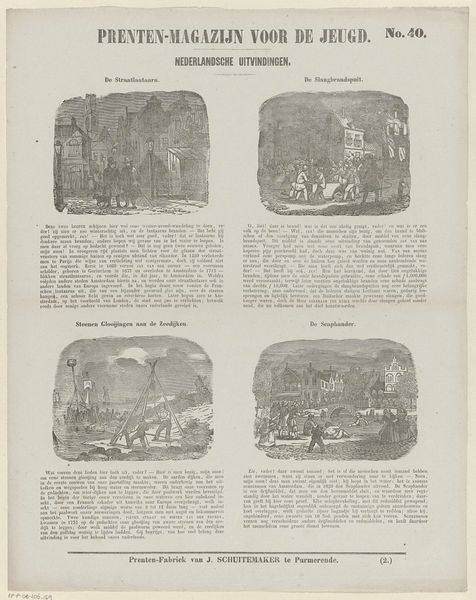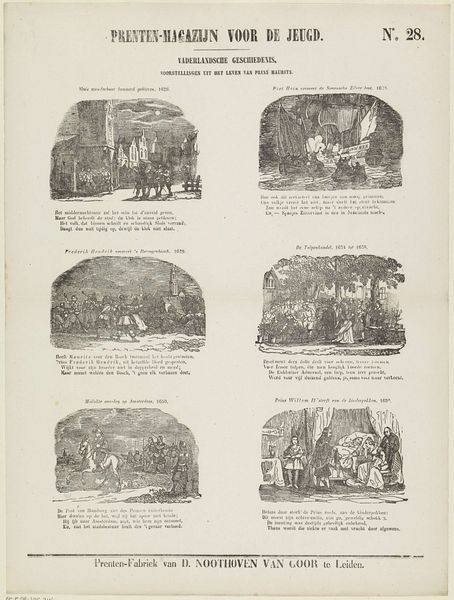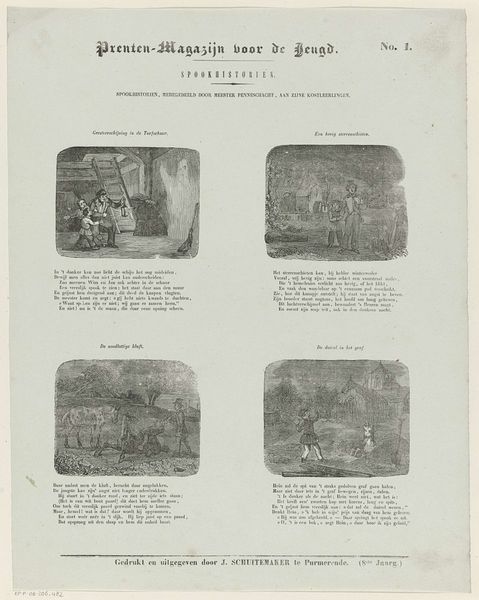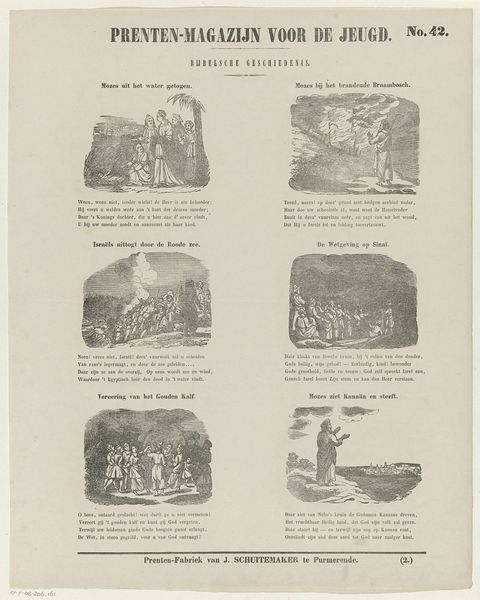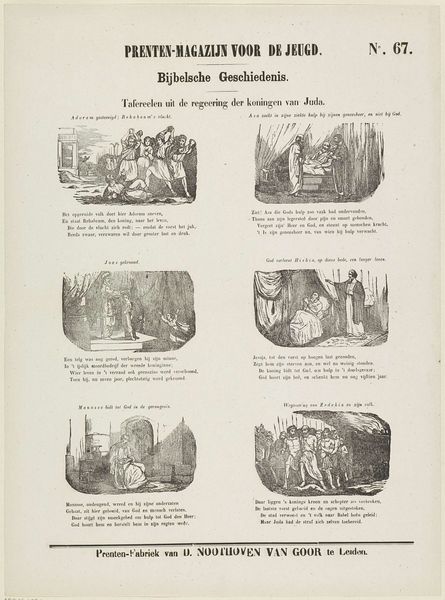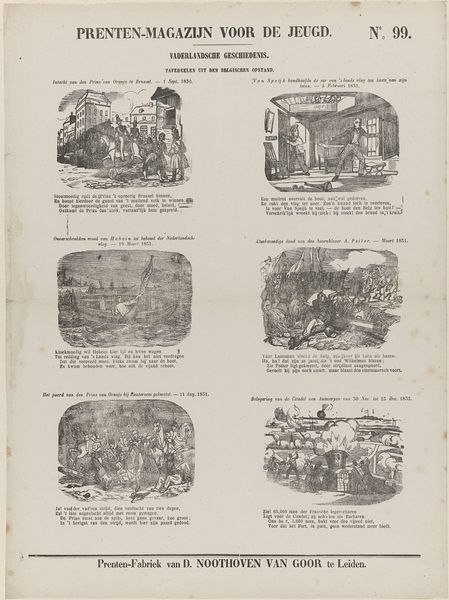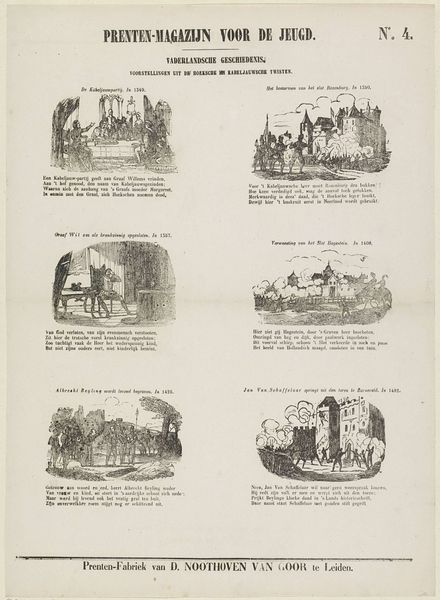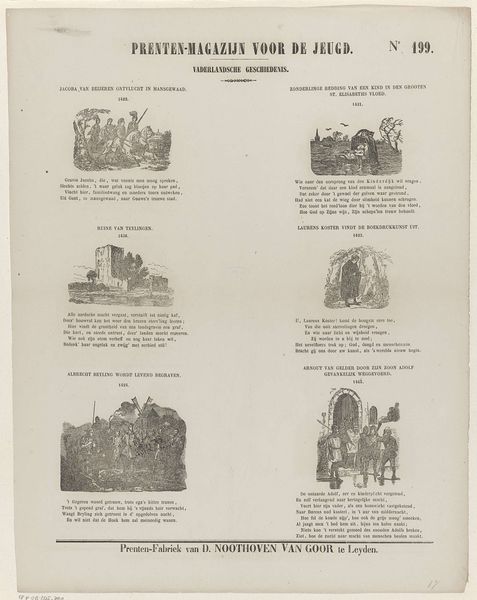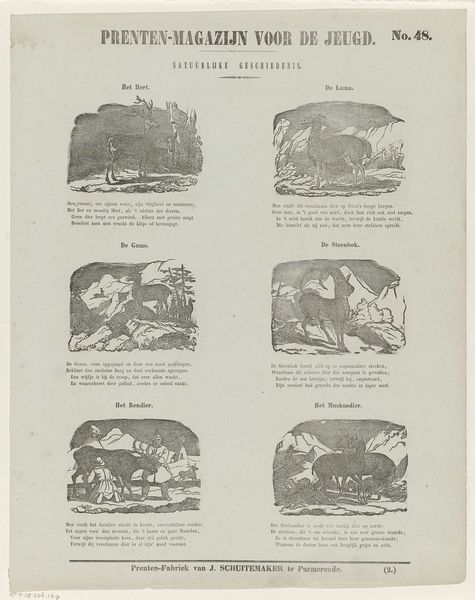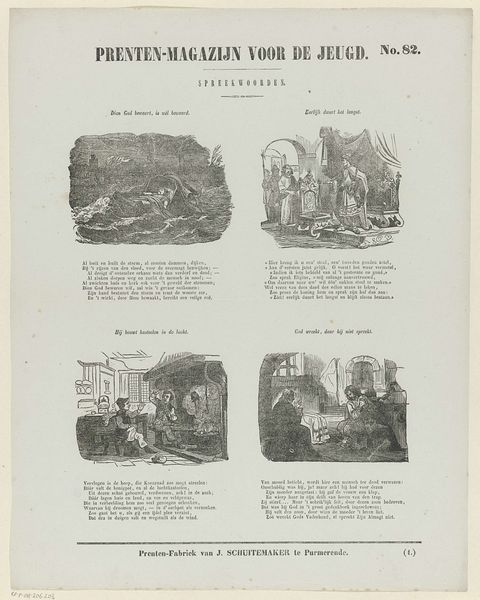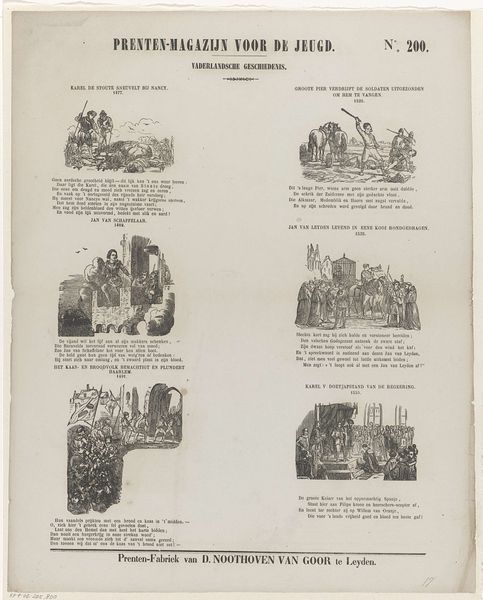
print, engraving
#
dutch-golden-age
# print
#
genre-painting
#
history-painting
#
engraving
Dimensions: height 425 mm, width 340 mm
Copyright: Rijks Museum: Open Domain
Curator: This engraving from 1850 by Jan Schuitemaker, titled "Voorstellingen uit het leven der prinsen Frederik Hendrik en Willem II", depicts scenes from the lives of those princes. It's interesting how historical events become popular subjects. Editor: My first impression is that it reminds me of a newspaper layout with its serial panels of illustrations, almost like a comic strip, but rendered in such stark monochrome. It definitely feels mass-produced. Curator: Indeed. These types of prints were designed to educate the youth about Dutch history. Consider how printmaking technologies disseminated specific narratives, reinforcing notions of nationhood and leadership. Each scene marks specific dates. Editor: Focusing on the actual printing, this was probably done via etching or maybe even lithography. Think about the workshops involved. It is fascinating to see how historical events are translated into this graphic, almost industrial process, and designed specifically for child consumption. Curator: Schuitemaker's work also highlights the crucial role played by publishers and distributors in shaping collective memory. It speaks to how power and historical narratives become accessible and, indeed, marketable. Editor: There is also the physical handling of such prints; who handled them? What environments? And how does the mass production affect the original meaning, and even reception of it? It must be understood as a form of material culture just as much as fine art. Curator: A valid point. The dissemination channels and intended audience profoundly influence our understanding. It's interesting to think about it as an artwork designed specifically to instill patriotic values in future generations, almost like visual propaganda. Editor: Exactly! Recognizing the role of prints and reproductive technologies opens up possibilities for a new perspective of art history, outside of the dominant frame of the master artists in favor of a critical understanding of how making impacts reception, meaning, and function. Curator: I find it quite insightful to ponder this artwork now from our vastly different vantage point, aware of the historical trajectories and legacies it unwittingly contributed to. Editor: Absolutely, it brings new insights when considered through labor, industry, and reproduction.
Comments
No comments
Be the first to comment and join the conversation on the ultimate creative platform.
